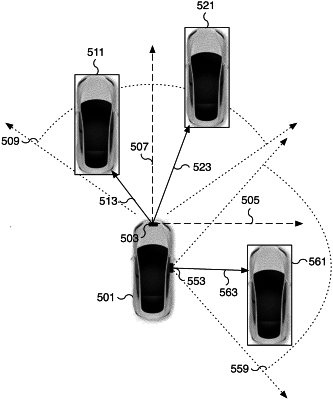| CPC G06V 20/58 (2022.01) [G06N 20/00 (2019.01); G06T 7/70 (2017.01); G06V 10/803 (2022.01); G06V 20/584 (2022.01); G06T 2207/20081 (2013.01); G06T 2207/30261 (2013.01)] | 17 Claims |

|
1. A system, comprising:
one or more processors configured to:
receive sensor data based on an image captured using a sensor of a vehicle, the sensor data representing at least one object in an environment of the vehicle;
provide the sensor data as an input to a trained machine learning model to cause the trained machine learning model to generate an output representing at least one property of the at least one object in the environment, the at least one property comprising a velocity vector corresponding to the at least one object in the environment of the vehicle,
wherein the trained machine learning model was trained using a training image and a correlated output of an emitting distance sensor; and
determine a predicted maneuver of the one or more objects in the environment of the vehicle based on the velocity vector.
|